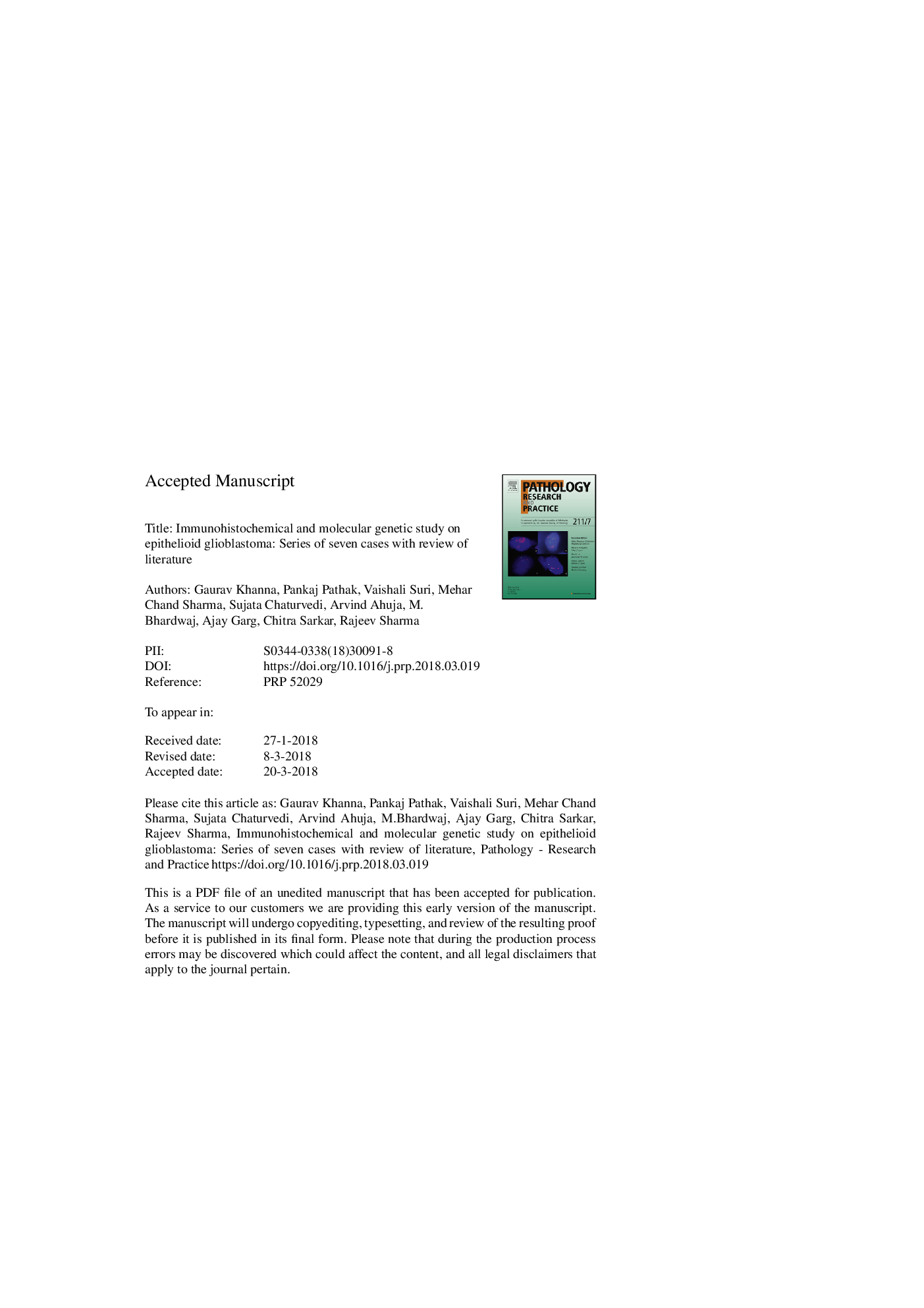| Article ID | Journal | Published Year | Pages | File Type |
|---|---|---|---|---|
| 8458044 | Pathology - Research and Practice | 2018 | 17 Pages |
Abstract
Epithelioid glioblastoma (e-gbm) is a recently described variant of glioblastoma (GBM) which is associated with short survival and now added as a provisional entity to WHO 2016 classification of CNStumors. About half of these tumors show characteristic BRAF-V600E mutation. However, unlike conventional GBMs, e-gbm lack specific diagnostic and prognostic markers. Hence, we aimed to molecularly characterize these tumors. An extensive review of literature was performed.In a multi-institutional effort, all the cases of glioblastoma of year 2017 were reviewed. Cases with predominant epithelioid morphology were analysed. Seven cases of e-gbm (adults:4 and pediatric: 3) were identified. Duration of symptoms varied from 2 weeks to one month. Radiologically, all cases were supratentorial, contrast enhancing with solid and cystic appearance. Majority of the cases were immunopositive for GFAP (71%), EMA (71%), S100 (71%) and vimentin (85%). All the cases showed ATRX, INI-1 and H3K27me3 expression. BRAFV600Emutation was seen in 28% of cases. TERT mutation was seen in 40% cases, while one case showed EGFR amplification. H3F3A mutations and PTEN deletions were seen in none. Although e-gbms are rare, epithelioid morphology of a CNS tumor in a young adult or children with areas of necrosis needs thorough histomorphological and genetic workup.
Related Topics
Life Sciences
Biochemistry, Genetics and Molecular Biology
Cancer Research
Authors
Gaurav Khanna, Pankaj Pathak, Vaishali Suri, Mehar Chand Sharma, Sujata Chaturvedi, Arvind Ahuja, M. Bhardwaj, Ajay Garg, Chitra Sarkar, Rajeev Sharma,
